Key takeaways:
- Design revisions are essential for improving ideas and ensuring alignment with client expectations, viewing them as collaborative opportunities.
- Effective communication and regular check-ins with clients help clarify design concepts and foster trust throughout the revision process.
- Visual aids and setting clear expectations can enhance understanding and manage revisions more effectively, turning feedback into actionable insights.
- Embracing feedback as a learning experience fosters personal growth for designers and leads to innovative solutions.
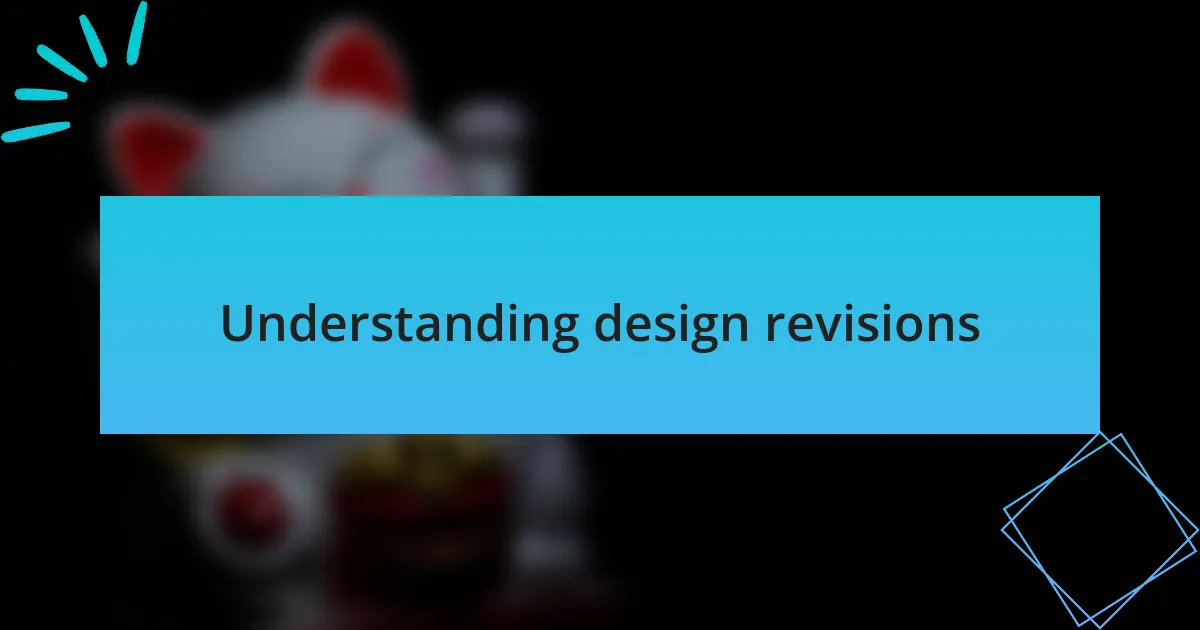
Understanding design revisions
Design revisions are an integral part of the creative process in any project, including web design. I often approach this phase with a mindset that embraces collaboration and open dialogue. It’s not just about changing visuals; it’s about refining ideas to ensure they resonate with both the client and the intended audience. Have you ever presented an initial design and felt a mix of excitement and anxiety about feedback? I certainly have.
When I first started working in a design agency, I remember feeling overwhelmed during revision meetings. Each piece of feedback seemed like a mountain of changes looming over me. However, I quickly learned to view feedback as a golden opportunity for improvement. Understanding the intent behind each suggestion can transform a challenging critique into actionable steps that elevate the design. It’s fascinating to see how a few well-considered adjustments can breathe new life into a project.
Participating in design revisions also teaches patience and adaptability. There were times when I had to step back and recognize that my initial vision might not align with the client’s expectations. Instead of seeing this as a setback, I began to view it as a collaborative dance. I find that when both the designer and the client are invested in the process, the final product not only meets the objectives but often exceeds them. Isn’t it rewarding to witness how these revisions shape the final design into something truly remarkable?
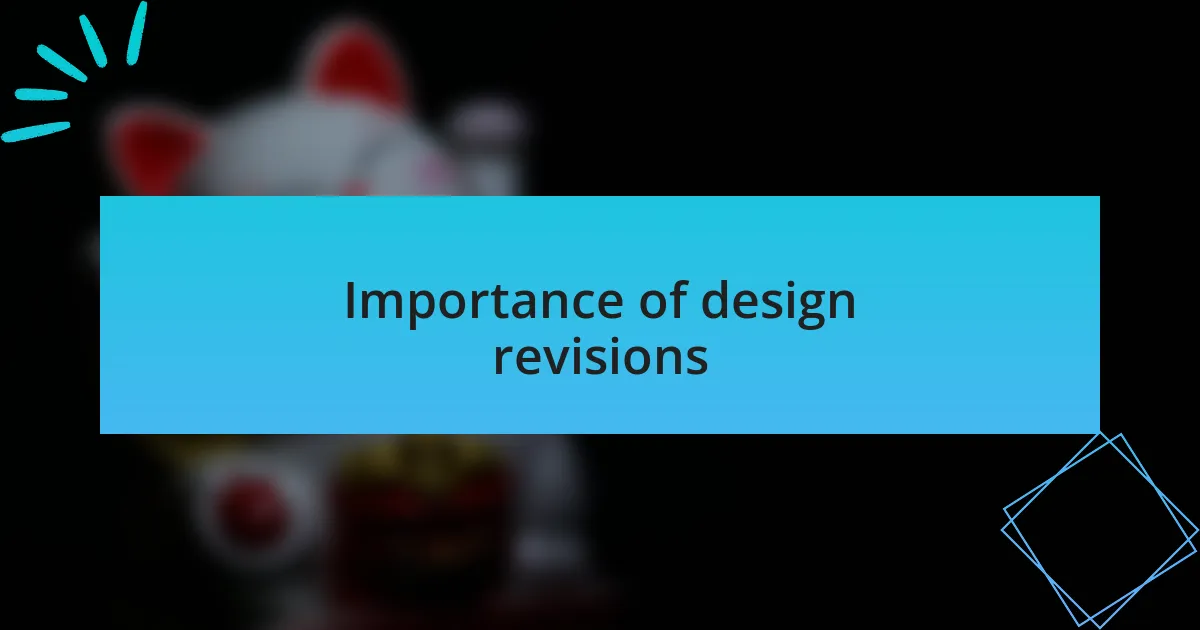
Importance of design revisions
Design revisions hold immense significance in the creative landscape. I recall a project where we were tasked with a complete redesign for a client. Initially, I felt disheartened after receiving extensive feedback. But I soon realized that each suggestion was a stepping stone toward a more refined and impactful design. Isn’t it intriguing how feedback can be a catalyst for innovation?
The importance of design revisions lies in their ability to bridge the gap between ideation and execution. One time, a client expressed concerns that weren’t immediately clear to me. By engaging in an open discussion, I was able to uncover their vision more deeply. It’s moments like these that remind me how design is as much about understanding the client’s story as it is about aesthetics.
Furthermore, revisions foster a growth mindset, empowering designers to evolve with each project. I often find that the initial designs are merely a foundation for something greater. When I embrace the revision process, I discover new techniques and perspectives that enrich my skill set. What better way to cultivate creativity than to welcome the challenge of improvement? Each revision is a lesson, a chance to enhance both the design and myself as a designer.
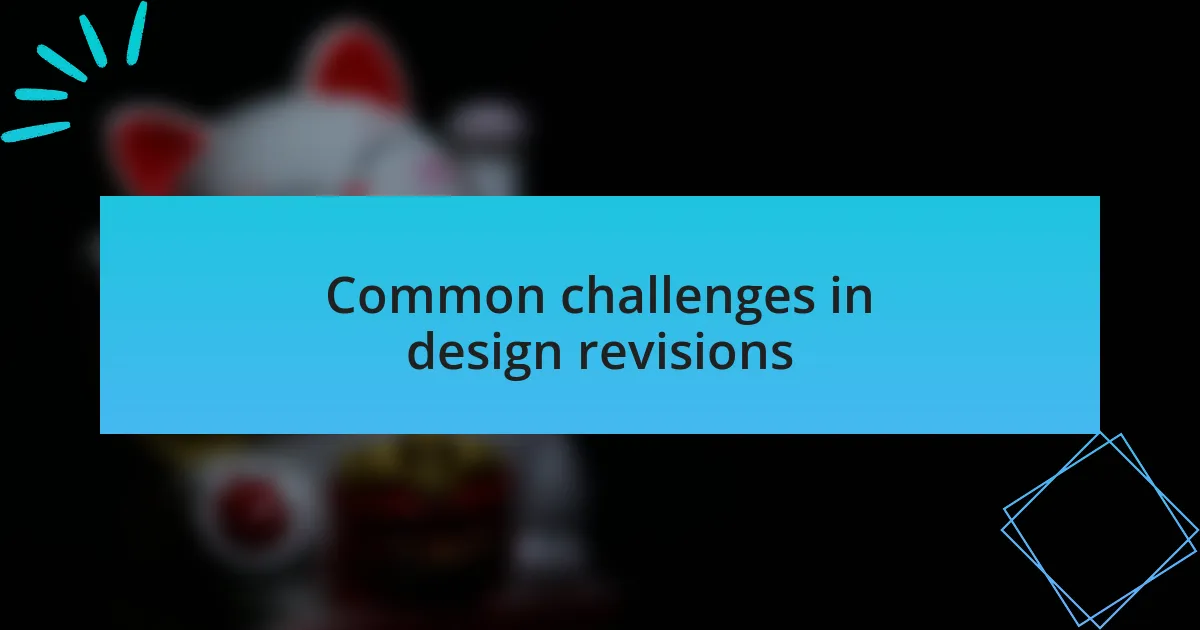
Common challenges in design revisions
Common challenges in design revisions often stem from miscommunication. I remember a project where a client’s feedback left me puzzled. The suggestions were vague and I found myself replaying our meetings in my mind, wondering where the disconnect occurred. Isn’t it fascinating how a few misunderstood words can lead to hours of redesigning?
Another challenge is managing differing opinions within a team. I once collaborated on a project where the creative direction was split between two design leads. The friction was palpable, as each designer had strong convictions about their vision. It taught me the importance of establishing a clear design rationale and encouraging open dialogue early in the process. How can we effectively harmonize these perspectives to forge a cohesive design?
Lastly, the emotional investment in our designs can complicate revisions. I vividly recall feeling attached to a particular layout I’d crafted, only to hear feedback that called for a complete overhaul. Initially, the critique stung. However, I learned to view it as an opportunity to cultivate resilience and adaptability. How often do we find ourselves at odds with our creations, and what can we learn from that experience? Embracing the revisions not only sharpens our designs but also strengthens our creative spirit.

Effective communication with clients
Effective communication is the backbone of any successful design project. I recall a time when I was working on a website redesign. The client and I had different interpretations of the term “clean layout.” After a quick call to clarify their vision, we aligned perfectly, and the design took off from there. Isn’t it remarkable how a simple conversation can save so much time and confusion?
Establishing regular check-ins is also crucial. I’ve learned that inviting clients to view work-in-progress sketches fosters a sense of collaboration. During one project, I set up bi-weekly meetings where I shared updates and welcome feedback early on. This proactive approach not only kept clients engaged but also allowed me to adjust the design in real-time, which ultimately led to a smoother revision process. Have you considered what a difference consistent communication can make in your workflow?
Moreover, taking the time to explain design choices can turn hesitation into trust. I fondly remember a project where I detailed the reasoning behind choosing a specific color palette during a client meeting. Their initial skepticism transformed into excitement as they understood how those colors would resonate with their target audience. Isn’t it fulfilling to see a client not just approve, but genuinely connect with the design vision? A transparent dialogue not only clarifies intentions but also builds lasting relationships.
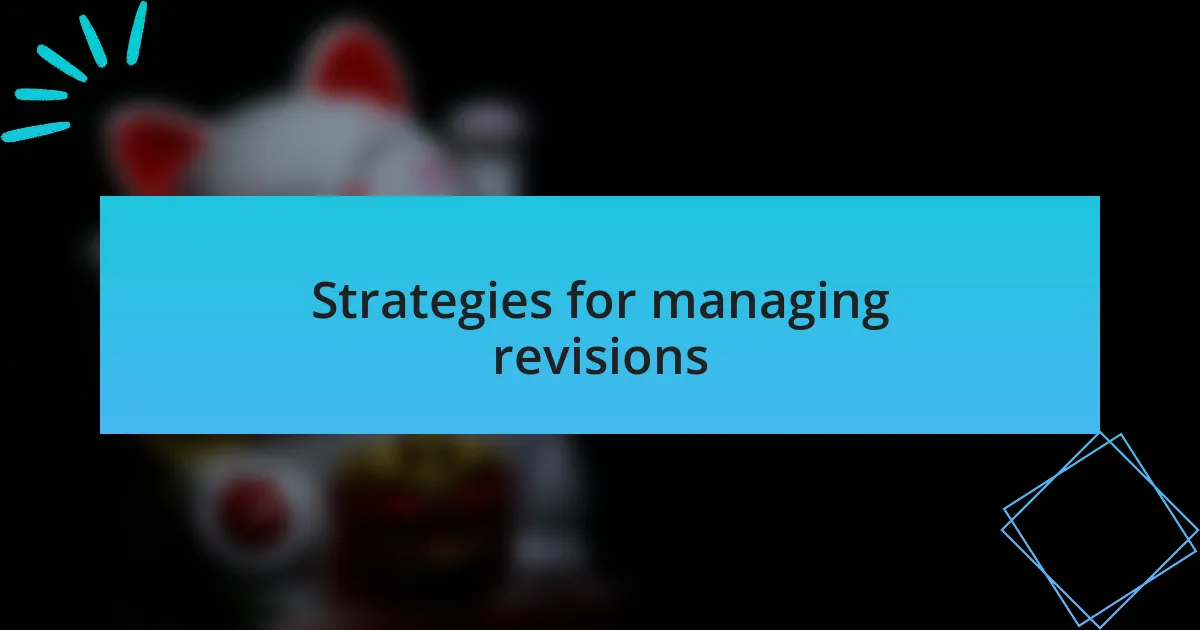
Strategies for managing revisions
One effective strategy for managing revisions is to set clear expectations upfront. I remember a project where I outlined the number of revisions included in the contract from the beginning. This clarity helped prevent scope creep and miscommunication down the line. Isn’t it reassuring when both parties know the boundaries and deadlines right from the start?
Another helpful approach is using visual aids during the revision process. In a project where clients were unsure about layout adjustments, I created simple mockups to illustrate potential changes. This method encouraged open dialogue and made it easier for them to articulate their thoughts. Have you ever tried using visuals to bridge the gap between concepts and client understanding?
Lastly, embracing feedback as a learning opportunity can transform the revision process into a more positive experience. I recall responding to critical feedback on a website’s navigation design by asking targeted questions to get to the root of their concerns. This dialogue not only improved the design but also empowered the client, showing them that their insights were valued. How often do we pause to reflect on how feedback can lead to better solutions rather than seeing it as a setback?
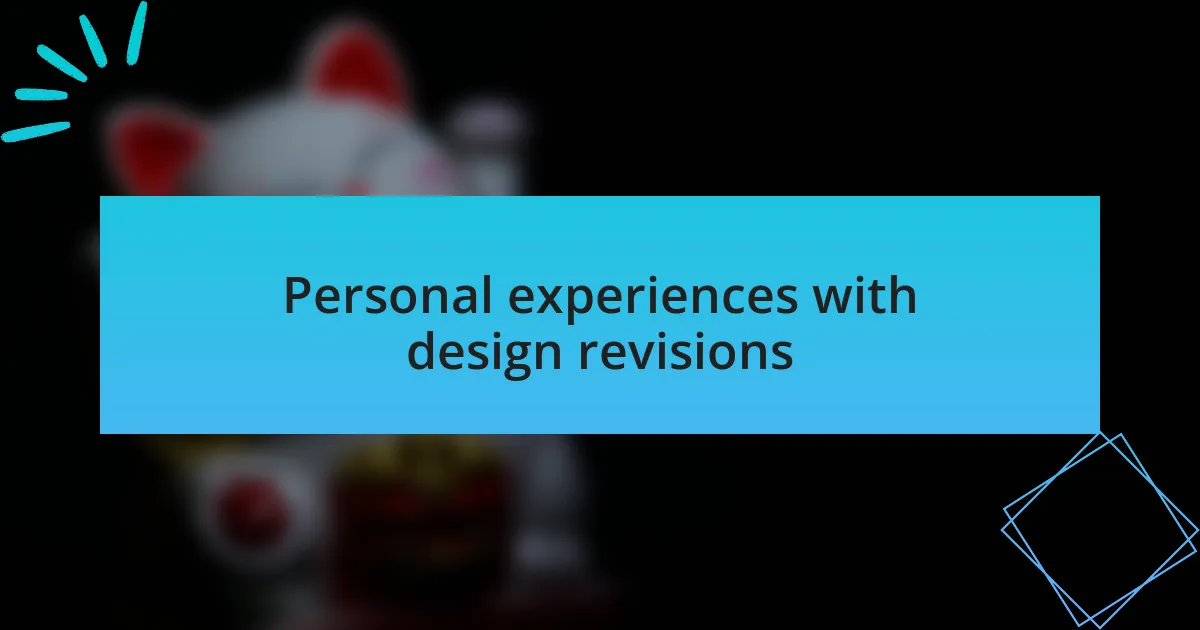
Personal experiences with design revisions
It’s often during the revision phase that I truly bond with clients. I recall a particularly challenging project where a client was hesitant about revising the color scheme of their brand. Initially, they were mostly attached to their old choices, but through patient discussions and a few playful color experiments, they began to see the possibilities. Witnessing that shift was not just exciting; it felt rewarding to help them find a fresh identity.
One project I remember vividly involved a restaurant’s website that needed a complete overhaul after the client was dissatisfied with the initial version. After a lengthy feedback session, it became clear that they were anxious about losing their essence. To ease their concern, we created a unique hybrid design that maintained key elements while incorporating modern features. That moment of realization—when the client finally saw their brand reflected in the new design—was incredibly fulfilling. Have you ever felt that rush when a client’s joy aligns perfectly with your vision?
On another occasion, I dealt with a client who provided feedback that was somewhat vague. Instead of feeling frustrated, I chose to dive deeper, asking them to describe specific issues they faced while navigating the site. This open dialogue revealed invaluable insights that significantly enhanced the user experience. Such moments remind me how vital communication is in this creative process. When have you turned vague feedback into clarity through conversation?

Tips for successful design revisions
When it comes to successful design revisions, one of my golden rules is to embrace feedback, no matter how challenging it may seem. I recall a project where a client presented a long list of critiques that initially felt overwhelming. Instead of seeing it as a setback, I decided to break each point into manageable discussions, allowing us to tackle concerns one at a time. Have you ever found that focusing on individual elements can yield clearer insights?
Another key tip I’ve learned is the importance of visual aids during the revision process. In one instance, I created a side-by-side comparison of the original design and the proposed changes. This approach not only helped the client visualize their feedback but also sparked engaging conversations about aesthetics and functionality. Have you tried using visuals to bridge the gap between ideas and reality?
Lastly, setting a timeline for revisions can significantly enhance productivity. I remember working on a tight schedule with a client who had a clear vision but struggled to articulate it. By establishing specific deadlines for each round of feedback, we were able to maintain momentum. This not only kept the project on track but also fostered a sense of urgency that encouraged more decisive choices. Isn’t it amazing how structure can sometimes lead to creative breakthroughs?